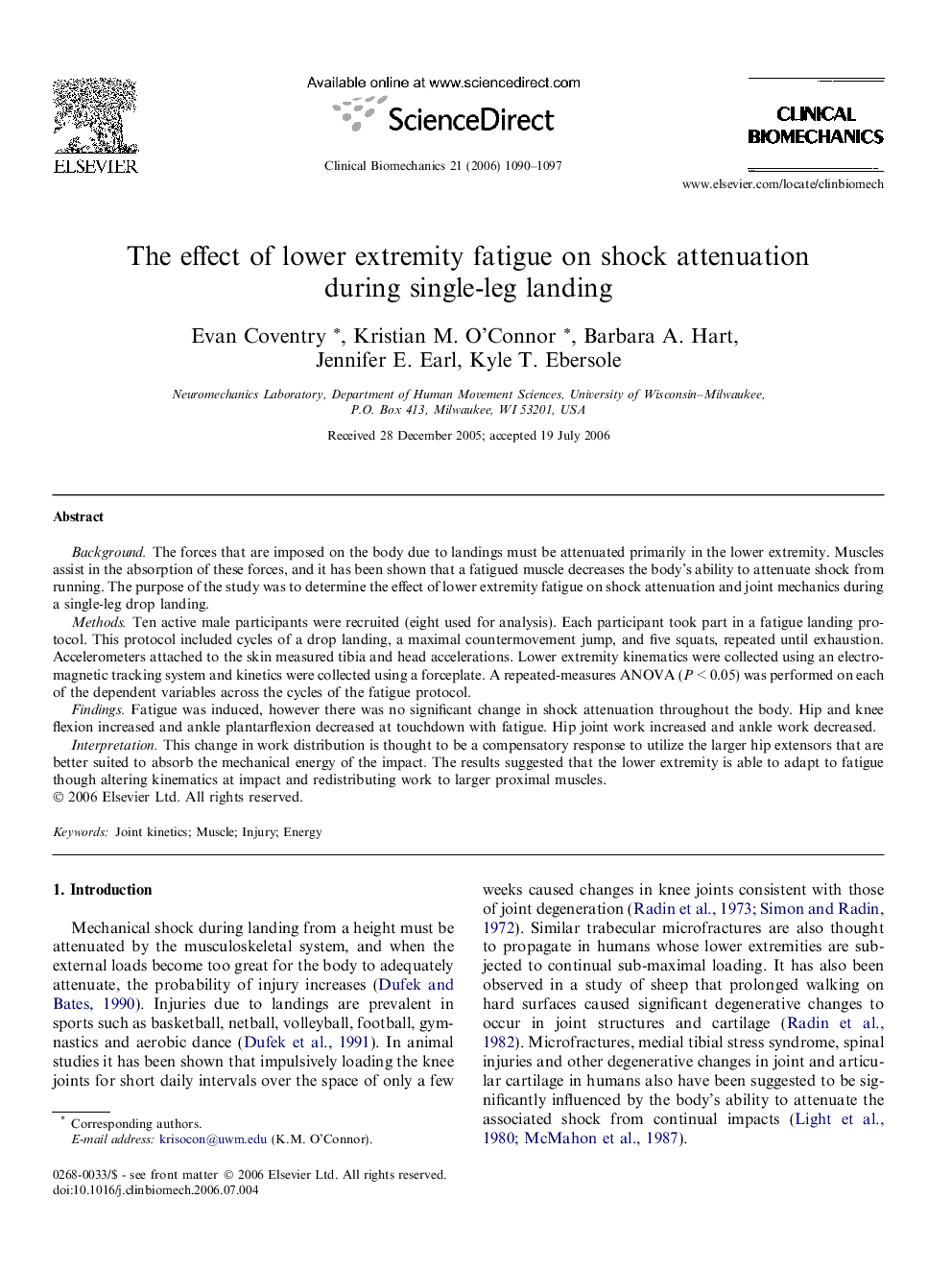| Article ID | Journal | Published Year | Pages | File Type |
|---|---|---|---|---|
| 4051409 | Clinical Biomechanics | 2006 | 8 Pages |
BackgroundThe forces that are imposed on the body due to landings must be attenuated primarily in the lower extremity. Muscles assist in the absorption of these forces, and it has been shown that a fatigued muscle decreases the body’s ability to attenuate shock from running. The purpose of the study was to determine the effect of lower extremity fatigue on shock attenuation and joint mechanics during a single-leg drop landing.MethodsTen active male participants were recruited (eight used for analysis). Each participant took part in a fatigue landing protocol. This protocol included cycles of a drop landing, a maximal countermovement jump, and five squats, repeated until exhaustion. Accelerometers attached to the skin measured tibia and head accelerations. Lower extremity kinematics were collected using an electromagnetic tracking system and kinetics were collected using a forceplate. A repeated-measures ANOVA (P < 0.05) was performed on each of the dependent variables across the cycles of the fatigue protocol.FindingsFatigue was induced, however there was no significant change in shock attenuation throughout the body. Hip and knee flexion increased and ankle plantarflexion decreased at touchdown with fatigue. Hip joint work increased and ankle work decreased.InterpretationThis change in work distribution is thought to be a compensatory response to utilize the larger hip extensors that are better suited to absorb the mechanical energy of the impact. The results suggested that the lower extremity is able to adapt to fatigue though altering kinematics at impact and redistributing work to larger proximal muscles.
